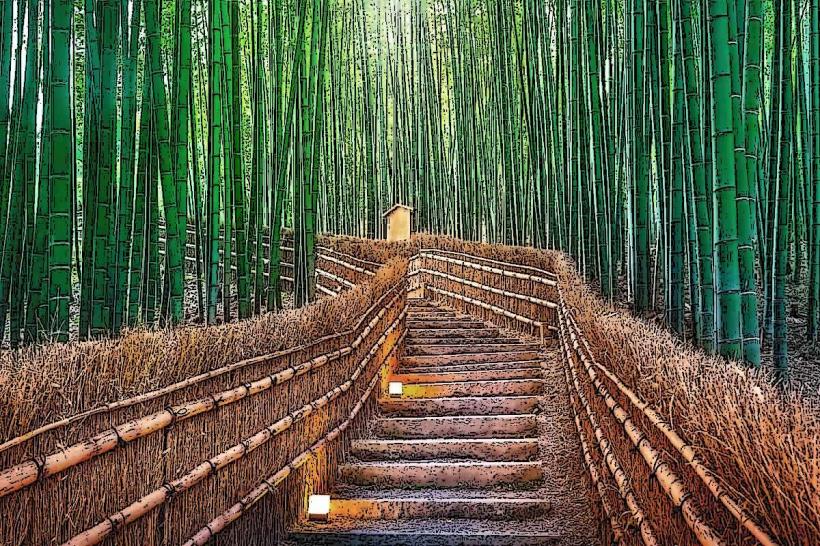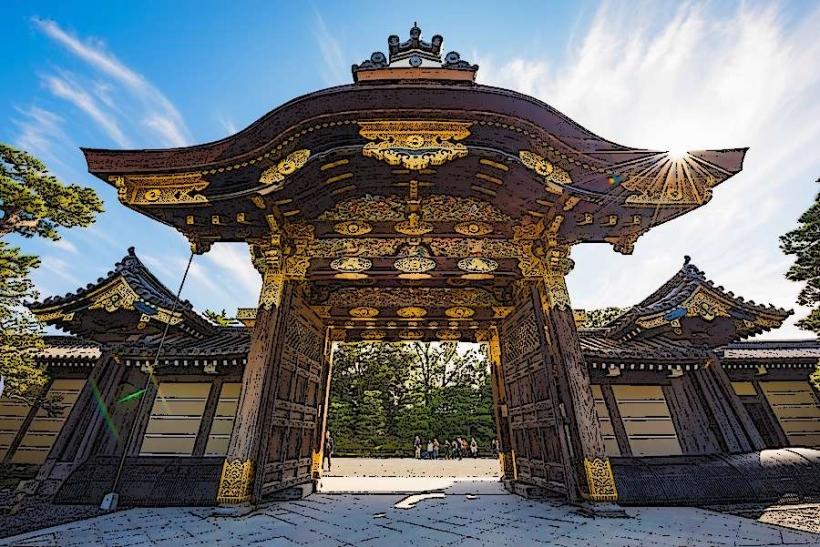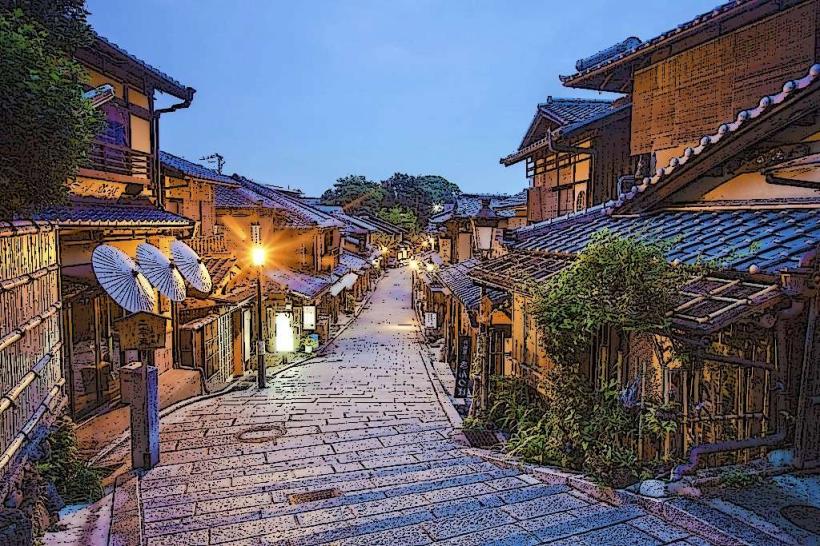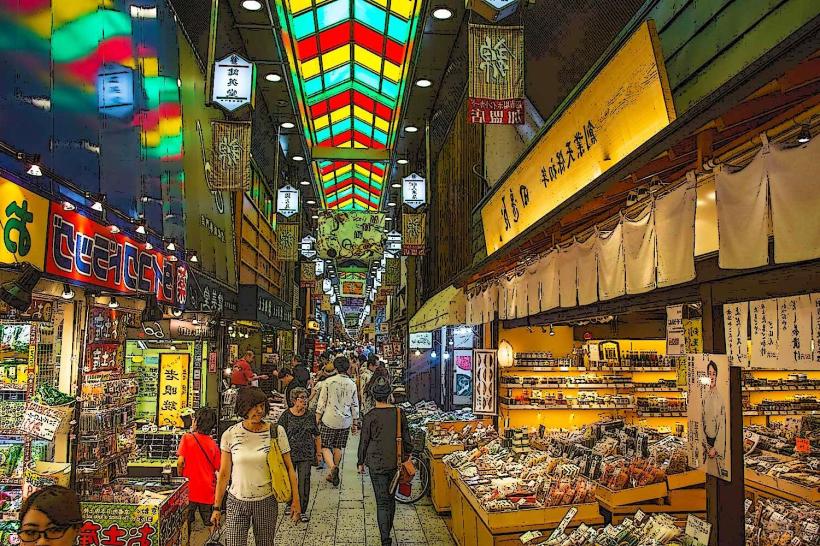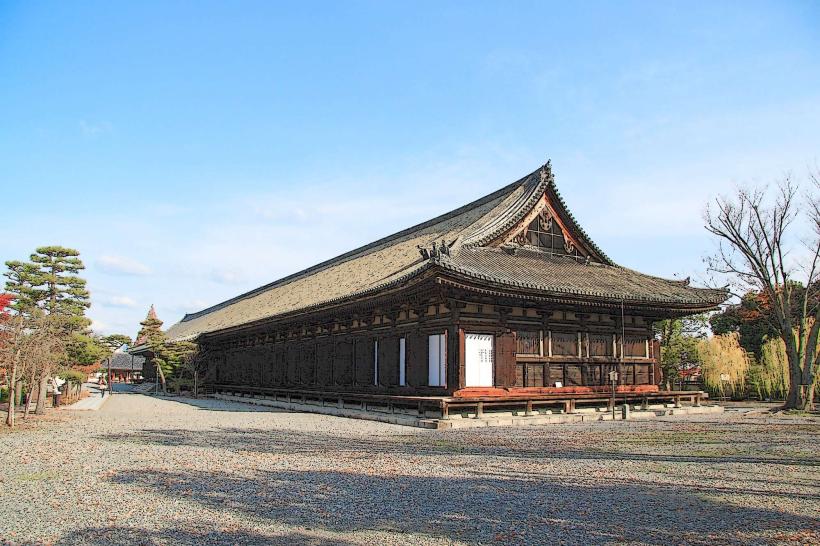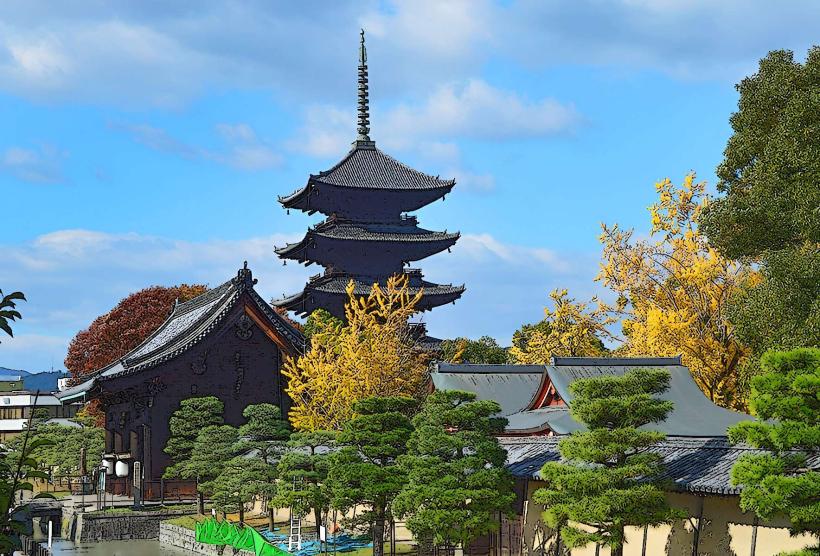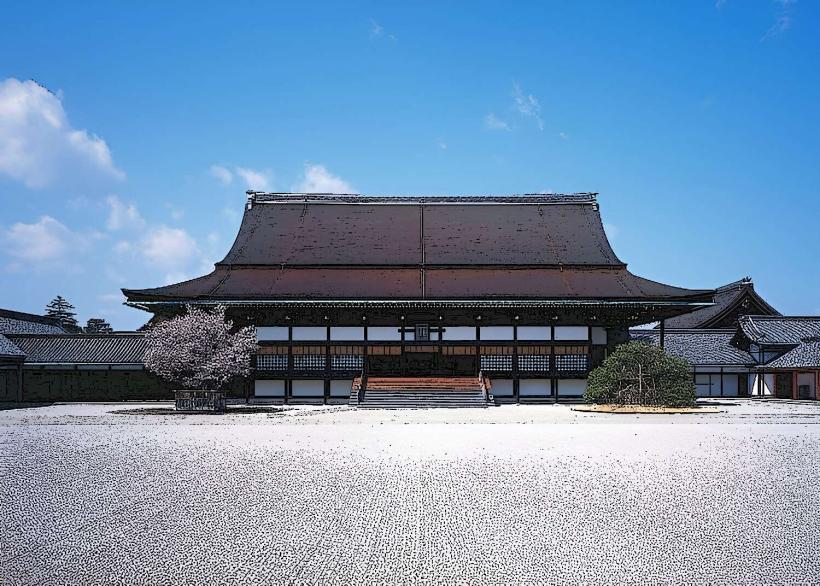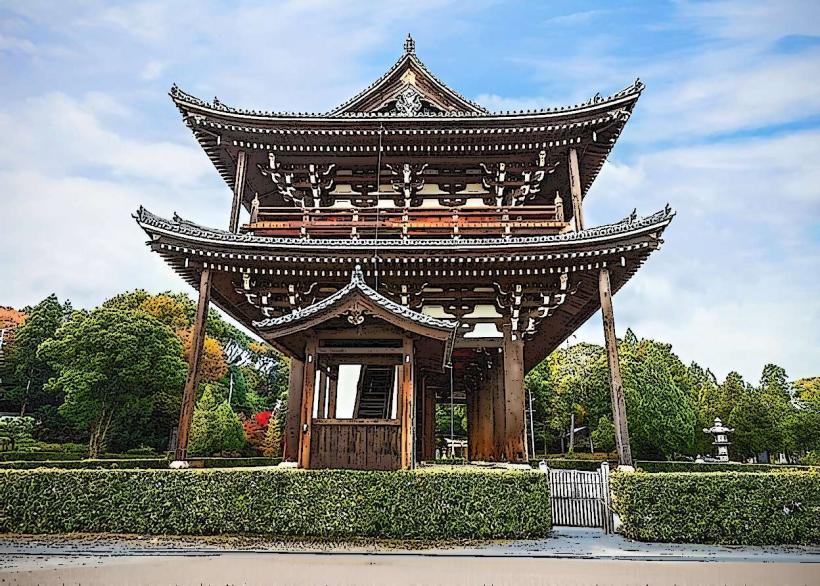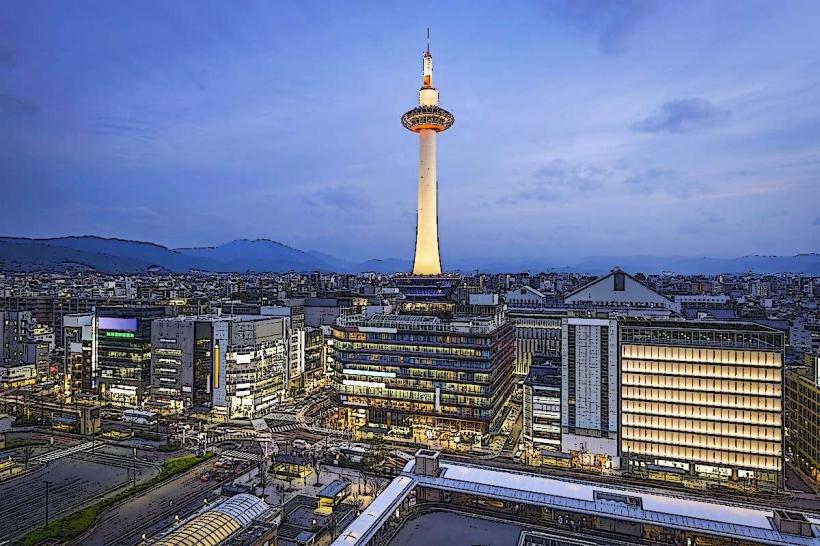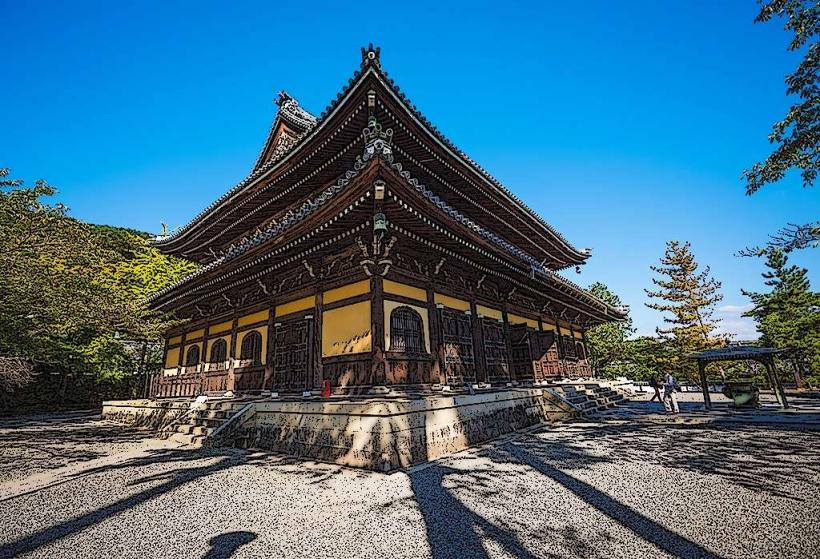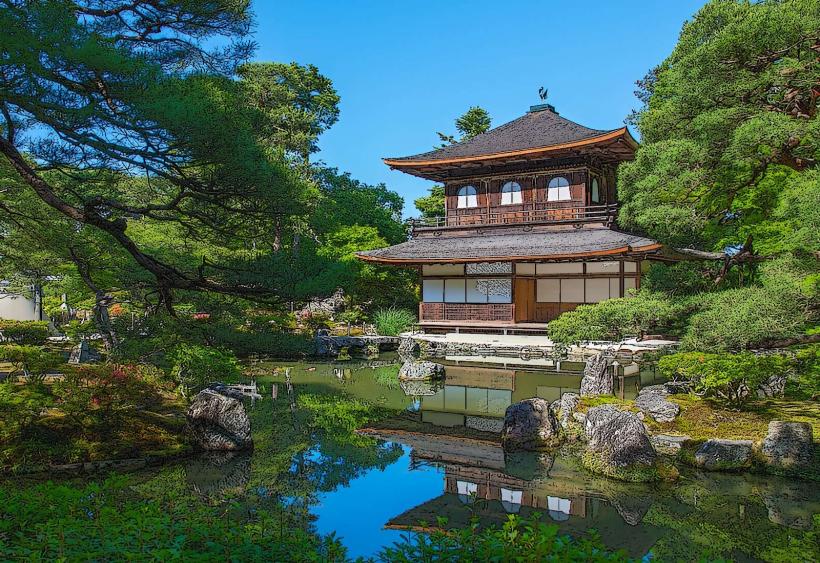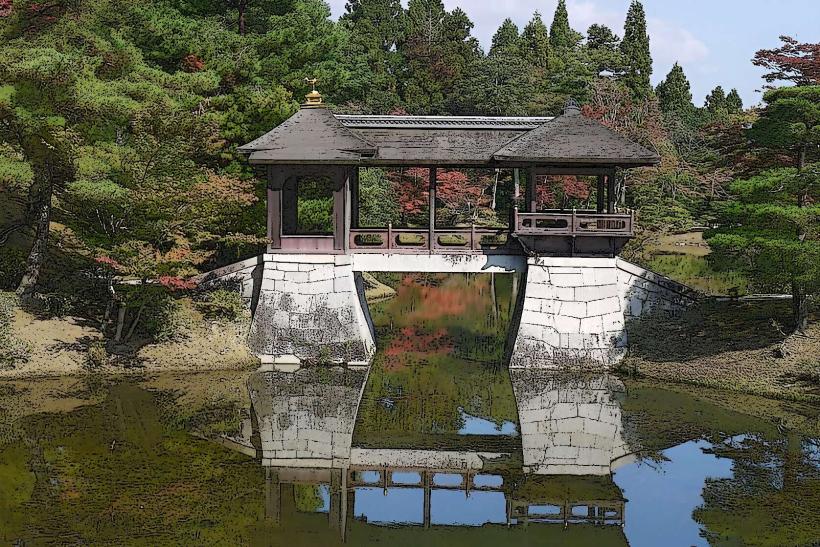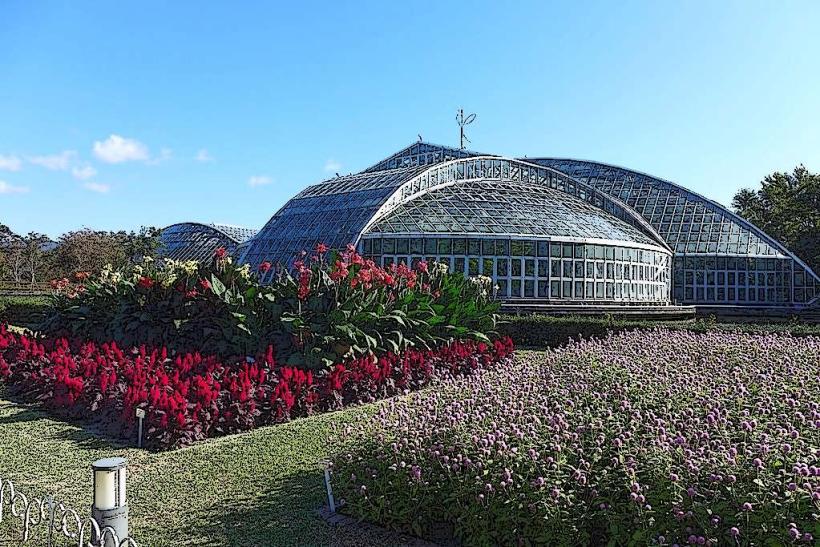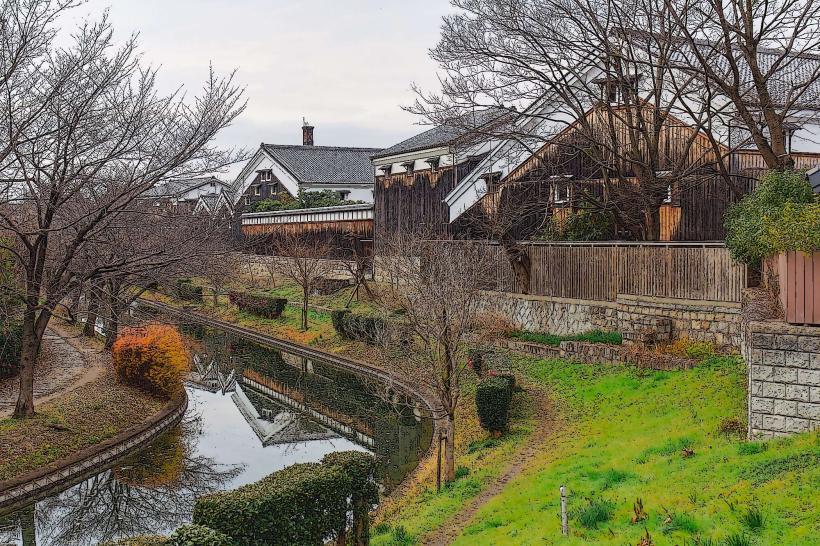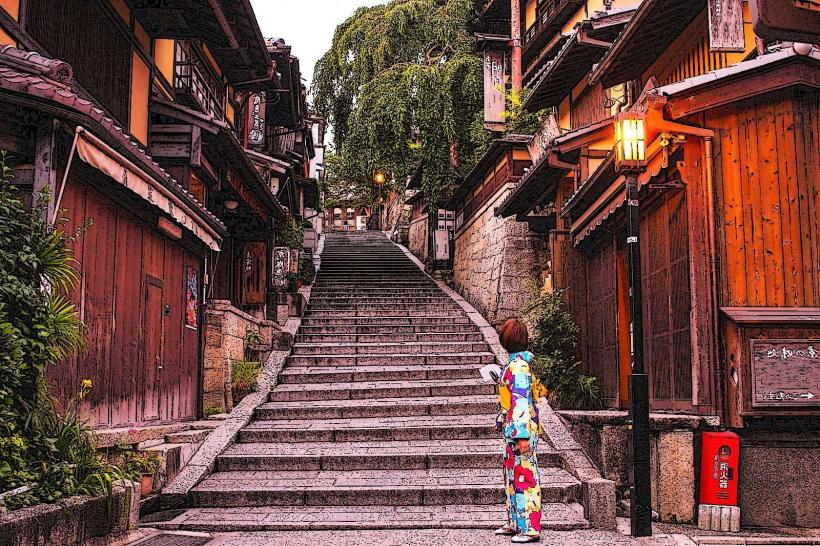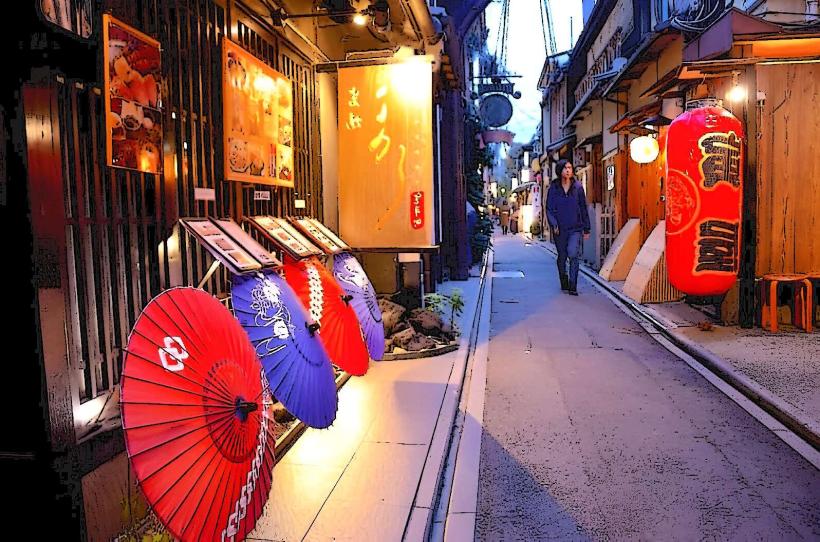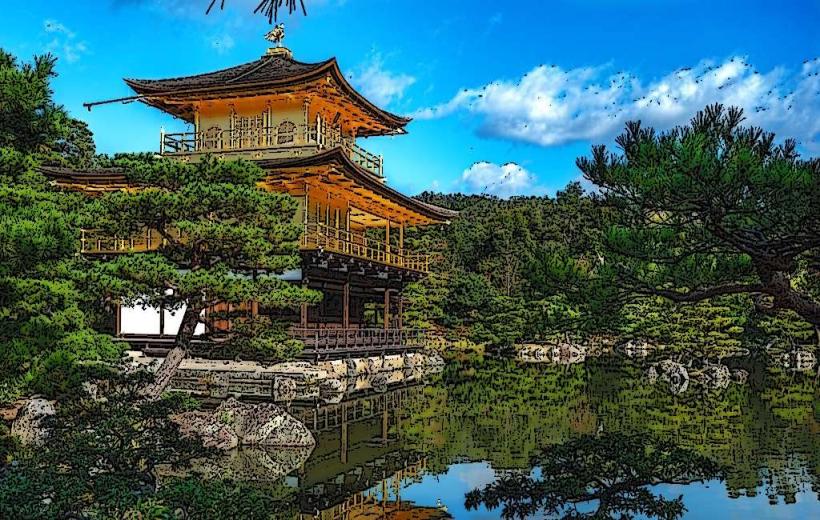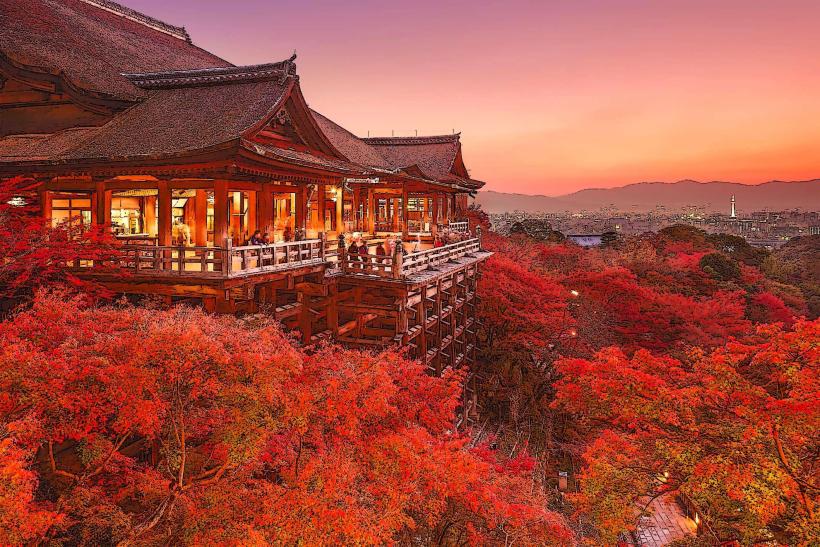Informations
Point de repère: Eikan-do Zenrin-jiVille: Kyoto
Pays: Japan
Continent: Asia
Eikan-do Zenrin-ji, Kyoto, Japan, Asia
Eikan-dō Zenrin-ji (永観堂禅林寺) is a famous Zen Buddhist temple located in the eastern part of Kyoto, near the scenic Higashiyama district. It is known for its stunning gardens, rich history, and exceptional beauty, especially during the autumn when the temple grounds are ablaze with vibrant fall foliage. The temple is often referred to simply as Eikan-dō, and it attracts visitors who appreciate both its spiritual significance and natural beauty.
1. History of Eikan-dō Zenrin-ji
Founding: Eikan-dō Zenrin-ji was originally established in 863 by the Buddhist monk Zonkō. The temple's history can be traced back to the Heian period (794–1185), and it was originally a place for the practice of Pure Land Buddhism. However, in the 12th century, it came under the influence of Zen Buddhism and became affiliated with the Rinzai school, which emphasizes meditation (zazen) and direct experience.
Name: The temple’s name, Eikan-dō, is said to have been inspired by the temple's association with Le moine eikan , un disciple du célèbre hōnen (le fondateur du bouddhisme pur terrien). It is also sometimes called Zenrin-ji, meaning "Zen Forest Temple," reflecting the Zen influence in the later years.
Historical Significance: Eikan-dō has a long and rich history, having served as an important center of learning and spiritual practice in Kyoto. Il a été patronné par de nombreuses personnes éminentes et a été un site important pour la méditation et les enseignements bouddhistes depuis des siècles.
2. Architectural Features
Main Hall (Hōjō): The main hall of Eikan-dō, called the Hōjō, is a significant feature of the temple. It is a traditional Japanese wooden structure with sloping roofs and intricate carvings, reflecting classic Zen architecture. Inside the hall, visitors can find images and statues of Buddha and other Buddhist figures, which are used in the temple's various rituals and ceremonies.
The Great Buddha (Amida Buddha): One of the temple's most notable features is its large Amida Buddha statue, qui est logée dans le hall principal . The Amida Buddha is one of the central figures in Pure Land Buddhism, and the temple's association with this figure reflects its historical roots in this tradition.
The Pagoda: Eikan-dō has a pagoda that offers a picturesque view of the surrounding landscape. The pagoda’s architecture is traditional, with multiple tiers and an elegant roof design, which adds to the temple's aesthetic beauty.
3. Eikan-dō’s Gardens
Eikan-dō is famous for its beautiful gardens, particularly the stunning Japanese landscape gardens that enhance the temple’s peaceful atmosphere. These gardens are designed to invite reflection and meditation, providing visitors with a serene space to connect with nature and spirituality.
Autumn Foliage (Kōyō): Eikan-dō is particularly famous during autumn when its grounds are adorned with vibrant fall colors, especially the maple trees. Les feuilles rouges, orange et jaunes créent une scène à couper le souffle qui attire des visiteurs de partout au Japon et dans le monde. Le temple est considéré comme l'un des meilleurs endroits de Kyoto pour profiter du kōyō (feuilles d'automne). The tree-lined paths and the colorful foliage reflect in the temple’s ponds, creating an idyllic setting for contemplation.
The Pond Garden: Eikan-dō features a beautiful pond garden, which is another integral part of the temple's aesthetic. L'étang, ainsi que ses lanternes en pierre et ses tremplins bien placés, crée un environnement tranquille et méditatif. The reflection of the trees and structures on the water's surface enhances the sense of calm and beauty, and the pond's design follows the principles of traditional Japanese garden design.
Zen Garden: Like many Zen temples, Eikan-dō also has a Zen garden where visitors can appreciate the simplicity and elegance of dry landscape design (Kare-Sansui). Ce jardin minimaliste comprend des rochers, du gravier et de petits arbustes disposés d'une manière qui encourage la méditation et l'introspection.
4. The Notable “One-Sided” View
One of the temple's most unique and famous features is the view from the Hōjō (main hall). The hall is built in such a way that it has an unusual “one-sided” view of the surrounding landscape, which means that from inside the hall, the view is blocked on one side by the main building, creating a sense of enclosure and introspection.
Symbolism: The “one-sided” view is thought to represent the idea of limiting one’s perspective in order to focus Plus profondément sur le moi intérieur. Le temple encourage les visiteurs à réfléchir sur l'importance de regarder vers l'intérieur et de comprendre la nature de la perception et de soi
5. Eikan-dō’s Role in Japanese Culture
Zen Influence: Eikan-dō has a significant place in the history of Zen Buddhism in Kyoto, particularly as it became a prominent center of Rinzai Zen practices during the Kamakura period (1185-1333). The temple has hosted a number of important Zen monks throughout its history, and it continues to attract Zen practitioners and visitors seeking spiritual insight.
Cultural and Artistic Influence: Eikan-dō’s beautiful gardens and tranquil atmosphere have inspired many artists, poets, and Designers de jardin à travers l'histoire. The temple's influence on the development of Japanese aesthetics, particularly with regard to garden design and the integration of nature into spiritual practice, is highly regarded.
6. Visiting Eikan-dō Zenrin-ji
Location: Eikan-dō is located in the Higashiyama district of Kyoto, which is known for its scenic beauty and proximity to other famous landmarks such as Philosopher’s Path and Ginkaku-ji (Silver Pavillon) . The temple is easily accessible by public transportation, including buses and trains, and is located not far from the Keage Station on the Tozai Subway Line.
Opening Hours: Eikan-dō is usually open from 9:00 AM to 5:00 PM, but it is important to check in advance as hours may vary depending on the season or special Événements.
Frais d'admission : Le temple facture généralement des frais d'admission modestes d'environ ¥ 600 pour les adultes. During the peak autumn foliage season, there may be a slight increase in the entrance fee, especially for special evening hours when the temple is illuminated.
Best Time to Visit: The autumn months, particularly November, are the most popular time to visit Eikan-dō due to the spectacular autumn foliage. Les couleurs changeantes des feuilles créent une vue à couper le souffle. Spring is also a wonderful time to visit for cherry blossoms, while the temple's gardens provide a tranquil setting throughout the year.
7. Conclusion
Eikan-dō Zenrin-ji is a temple that perfectly blends Zen Buddhist philosophy with natural beauty. Its peaceful atmosphere, beautiful gardens, and rich history make it a must-visit destination for those seeking spiritual reflection or simply wishing to enjoy the serene landscapes of Kyoto. Whether you visit for its autumn foliage, its Zen gardens, or the meditative ambiance, Eikan-dō offers a deeply enriching experience for both spiritual seekers and casual visitors alike.

